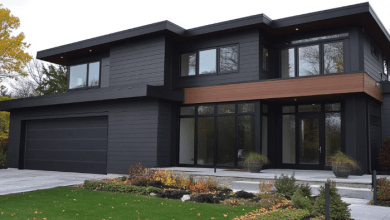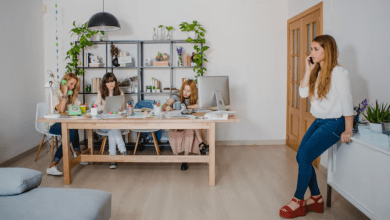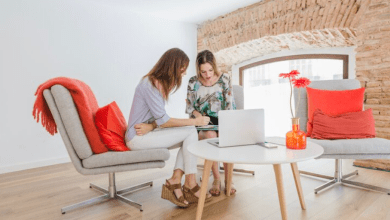
Living in an apartment doesn’t mean you have to give up your gardening dreams. With limited floor space, vertical planters offer a smart, stylish, and efficient way to bring greenery into your home, no backyard required.
By growing upward instead of outward, vertical gardening maximizes your available area, making it possible to cultivate a variety of plants, even in the smallest apartments or balconies.
Key benefits of vertical planters for apartment gardening
One of the greatest benefits of vertical planters is space efficiency. Vertical gardening dramatically reduces the footprint needed for plants. For example, a squash plant that would normally require 20 square feet can be grown vertically in just a few square feet, freeing up precious space for more plants or other uses.
Installing vertical garden planters can also improve air quality in your apartment. Plants absorb carbon dioxide and release oxygen during photosynthesis.
They also take in airborne toxins like formaldehyde, benzene, and xylene, which are commonly found in household items, cleaning products, and furniture. Plants can also increase humidity and trap dust and airborne particles.
Vertical planters can transform bare walls or balconies into lush, green spaces, adding beauty and a sense of tranquility to your home. On top of that, they add privacy to balconies with green screens or trellised plants.
Living in an apartment doesn’t mean you have to give up on fresh, homegrown produce. Vertical planters make it entirely possible, and surprisingly easy, to grow your food, even in tight spaces.
Tips for successful vertical apartment gardening
Vertical gardening in an apartment is a smart, space-saving way to enjoy fresh greenery and grow your food. But to make it thrive, you’ll need more than just a stack of pots. Let’s see the tips that will help you grow plants in your apartment.
-
Choose the right planter
Before buying any vertical planter, consider your available space, sunlight, and whether you want an indoor or outdoor system. Some planters are better suited for outdoor use due to water runoff.
-
Choose the right location
Pick a spot that gets enough sunlight. Most edible plants need 4 to 6 hours of direct light per day. South-facing windows, balconies, or sunny walls work best.
-
Select the right plants
Choose plants that suit your space, light conditions, and care level. Great options include herbs such as mint, basil, thyme, oregano, and parsley.
Then leafy greens like lettuce, spinach, and arugula. Compact veggies such as cherry tomatoes, radishes, cucumbers, peppers, and squashes.
You can also plant fruits like strawberries and other small fruiting plants. And if you just want greenery and flowers, you can plant air-purifying plants such as pothos, snake plant, and spider plant, and flowers such as violas and pansies.
-
Watering
Keep in mind that vertical gardens dry out faster than traditional ones. That’s why you need to water them smartly. You can either use self-watering planters or drip irrigation kits. Additionally, you can use catch trays to avoid messes indoors. Be sure to check soil moisture regularly to prevent over- or under-watering.
-
Soil and fertilization
Use high-quality light potting mix with good drainage to avoid overloading wall-mounted planters. Make sure you add organic fertilizer or compost regularly. Some vertical planter systems even allow you to compost kitchen scraps directly in the planter for ongoing soil enrichment.
-
Maintain and prune regularly
Keep your plants healthy by trimming dead leaves, pinching herbs such as basil, mint, and oregano to prevent flowering and prolong harvest, and rotating pots so all plants get light evenly.
For example, you can trim leggy growth to encourage bushier development. For flowering or fruiting plants, deadhead spent blooms to encourage more flowers.
When trimming and pruning dead leaves, use sharp, clean scissors or pruners to avoid plant damage and disease spread.
-
Keep an eye out for the pests
Even indoors, pests like aphids and fungus gnats can show up. Inspect plants regularly and treat with natural remedies like neem oil or insecticidal soap.
-
Secure your planters
Make sure your vertical structure is stable and securely mounted, especially if it’s wall-hung or placed near a window. You don’t want it toppling over or damaging your walls.
DIY and creative vertical planter ideas
Creating a vertical planter in your apartment doesn’t require a big budget or a lot of space, just a little creativity! Whether you want to grow herbs, leafy greens, or decorative plants, some of the fun, DIY ideas include using shoe organizers as planters, repurposing wooden pallets, using an old wooden ladder, PVC pipe planters, and so much more.
For instance, repurposing pallets or shoe organizers is one of the most common DIY vertical planter options. You can repurpose a wood pallet by sanding and painting, or sealing it. Then staple landscape fabric inside the slats to hold soil. And finally, mounting it vertically against a wall or balcony and filling it with flowers or herbs.
You can also turn a fabric or canvas shoe organizer into a vertical garden by filling each pocket with soil and plants (great for herbs or succulents). Then hang it on a door, balcony railing, or wall. But don’t forget to add a plastic liner inside each pocket to retain moisture.
Conclusion
Vertical planters make apartment gardening accessible, efficient, and enjoyable. Whether you’re a beginner or a seasoned gardener, these systems allow you to grow fresh food and flowers in even the tightest spaces, adding both greenery and vitality to your home.



